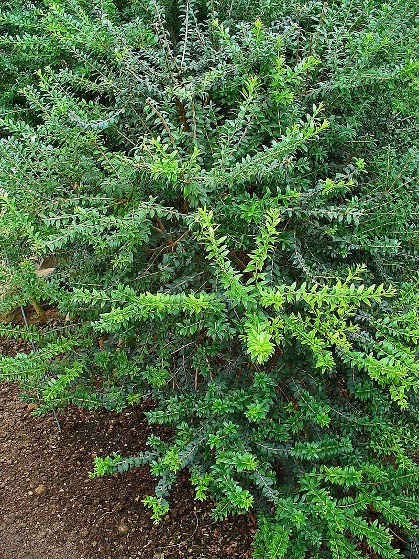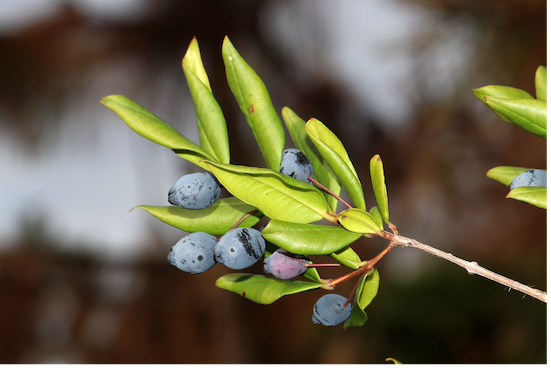- I have Myrtus communis in a container. Can it stay outside in the winter?
About this plant:
The common myrtle, also known as Foxtail myrtle, Sweet myrtle, True Roman myrtle and True myrtle is a species of flowering plant in the family ‘Myrtaceae’. This species and the more compact M. communis ‘Tarentina’ have won the Royal Horticultural Society's Award of Garden Merit.
A broadleaf evergreen shrub or small tree native to North Africa, Asia, and southern Europe. It can grow to 5 metres (16 ft) tall although typically most grow as a large shrub 150 – 185cm (5-6 feet) tall.
This is a plant that has been used since ancient times for medicinal and culinary purposes. The essential oils it produces have anti-proliferative (preventing or retarding the spread of cells) and anti-quorum sensing (preventing the spread of micro-organisms) properties and are used in the food preservation, cosmetics and soap making industries. The fruits, flowers, bark, and leaves can all be dried and used as flavourings in food. The leaves are a useful substitute for Bay leaves and the flowers can be added to salads. The berries are macerated in alcohol to make Mirto liqueur.

The leaves are pointed, opposite, ovate to lanceolate, 2–5 centimetres (1–2 in) long and are aromatic when bruisplant is self-fertile, pollinated by bees, and blooms from May to August. The flowers are about ¾ inches across, white or tinged pink, with five petals and many stamens that protrude from the flower. The fruit is an edible berry, blue-black when ripe. M. communis provides winter interest in a garden as the plant is evergreen. The blooms and berries attract and provide food for pollinators and birds.


It prefers a sheltered position, thriving in full sun although tolerating partial shade. Growing best in a loamy compost, it will adapt to both clay and sandy soils. The important thing for Myrtle is good drainage to prevent root rot, whether grown in the ground or in a pot. Once established M. communis has a degree of drought tolerance.
Scale, spider mites and thrips are insects that can damage this plant during hot, dry weather such as the drought conditions that we have experienced in the last couple of summers. The plants should be inspected regularly for these pests.
Winter care:
This plant is reasonably winter hardy to zones 7-10, particularly in mild, coastal locations. The genus “Andy’s Hardy” is a tougher plant, tolerating temperatures to minus 15 degrees C (5 degrees F).
To prepare the plant for the winter, a 4–6-inch layer of mulch around the root zone will help to prevent frost damage to the roots but a cold winter blast may still cause damage to the foliage. Covering the bush with frost protection cloth or burlap may protect it in the coldest times. An alternative is two boards fastened together in an upside down, ‘V’ shaped tent over the plant, oriented to protect from easterly winds. This will also prevent breakage from snow load.
Potted plants are susceptible to frost or snow damage and may also be vulnerable to freezing in the root zone. The plant would benefit from being in a sheltered position protected from cold winter winds and the same procedures used to protect the top growth as with bushes grown in the ground. If a very cold spell is anticipated, the pot can be insulated by wrapping it with a few layers of material such as bubble wrap. In the alternative a loose, burlap or plastic wrap around the pot well stuffed with straw or leaves can be used to protect the plant roots from frost.
The potted plants can be moved in the winter into areas like a well-lit garage or even into a cool location in the house. When grown indoors, scale, mealybug or whitefly can occur when the conditions include a warm room with low light and moisture.
M. communis is not particularly attractive to deer (but not deer proof).
Sources:
https://plants.ces.ncsu.edu/plants/myrtus-communis
https://en.wikipedia.org/wiki/Myrtus_communis
https://www.missouribotanicalgarden.org/PlantFinder/PlantFinderDetails.aspx?taxonid=282870#
My own experience
Return to:
Shrubs page
You Asked Us page
Victoria Chapter page